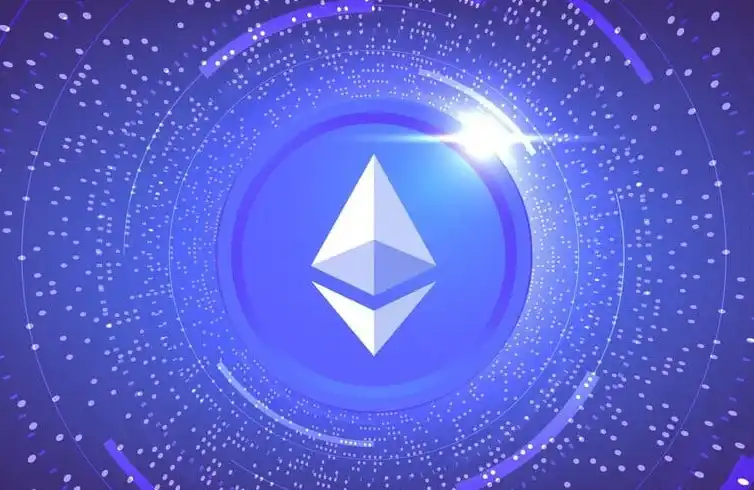Ethereum's New Vision
Original Title: A New Vision For Ethereum
Original Author: Francesco
Original Translation: Block Unicorn
Foreword
Over the past few years, Ethereum has been at a crossroads. Increasing criticism has led to leadership changes within the Foundation, with a focus on broader scrutiny to enhance transparency and engagement, and a greater emphasis on value capture at the L1 level.
In the past, it was rare to see an Executive Director speak in multiple breakout discussions at an Ethereum conference. This week, I was delighted to see Tomasz K. Stańczak (Ethereum Foundation Co-Executive Director) engaging in activities and breakout discussions as much as possible. It was truly refreshing, and hopefully a sign of things to come.
So... what is the future vision for Ethereum? How do we ensure this vision is well executed? This article provides an overview of Ethereum's vision.
Goals
To have a structured vision, one must start with goals.

For Ethereum, the main goals are as follows:
1. Embrace the crypto ethos, focusing on privacy and trustlessness. This is not just about attracting new users, but ensuring they can embody these values and ethos in their building. Building, yes, but with purpose and values.
2. Ensure Ethereum remains the most secure and resilient blockchain infrastructure. This aligns with Vitalik's post on "Trillion Dollar Security." It is part of a wider discussion on security:
· How to enhance Ethereum's security?
· How to effectively communicate this to users?
· How to ensure institutions and users can fully leverage this?
Most importantly: How do we ensure all technical developments continue to uphold Ethereum's core ethos and values? No shortcuts, no compromises. Recently, Ethereum has faced a lot of criticism and some distancing from developers. However, this situation seems to be changing. In fact, we can expect the Ethereum Foundation to take a slightly more proactive approach and establish a new funding policy. Thomas has indicated that this will be used to explore efficient and sustainable DeFi protocols and strategically allocate funds to them, transitioning from a passive to a more guiding form of management.
This is just one of a series of challenges that will have a profound impact on Ethereum's long-term future, including:
· Regulatory Clarity
· AI Adoption
· Privacy Issues

One key aspect and a recent major trend is the increasing institutional adoption.

Ethereum's future vision is to treat various domains and industries as modular components, making them open-source and removing intermediary institutions.

In turn, these modules will ensure a smooth transition from Web2 to Web3, eliminating friction between institutions. Imagine healthcare institutions from different countries being able to open up and contribute to a health data repository. All of this secured through interactions on the Ethereum blockchain, ensuring the security and verifiability of these solutions.
The ultimate goal? Allowing users to on-chain transact all global assets.
Challenge
However, to achieve this goal, Ethereum needs to address some key challenges and confusions faced by users.

Therefore, the focus in the future will be on addressing some of the key challenges in on-chain privacy and identity verification, and countering the threat of AI by building Ethereum as a trusted layer for AI execution.
· Trust neutrality.
· Globalization.
· Privacy and security by design.
All of these will create a diverse environment, establish a social structure where different participants can collaborate, with the ultimate goal of making Ethereum a network resistant to fragility. To truly resist centralization, it is essential to ensure participation from around the globe and incorporate diverse voices and approaches to build a truly global network.

This will enable Ethereum to listen to important issues and empower diversity. Hearing news about the tension between L1 and L2 is also refreshing, with the Ethereum Foundation clearly stating there is no hostility between them. Instead, Ethereum will more actively guide how to ensure these L2s reach the next stage, protecting users through Ethereum as the underlying base layer.

Last but equally important, we have seen the emergence of real-time blockchains like MegaETH, as well as other fast networks like Monad and Hyperliquid. This has also raised issues of interoperability and integration:
· How to ensure they are connected to the Ethereum mainnet?
· How to build a 25-millisecond block time blockchain that inherits Ethereum's security parameters?

Therefore, new tools need to be introduced to validate at what level new challenges can be identified and ensure that the client can integrate with these networks. This opens up a new creative space for client development. All Ethereum client teams agree that each block should consume 45 to 60 million gas, aiming to reach 100 million gas by the end of this year or the first quarter of next year.
Internal restructuring will help achieve this goal, with modular teams working towards a common goal:
· Expand L1
· Expand Blob
· Improve user experience
· Enhance interoperability
You heard it right: Expanding L1 (an area previously overlooked) is one of these goals.

I am personally optimistic about Ethereum, welcome this awakening, and hope to see it further progress.
Welcome to join the official BlockBeats community:
Telegram Subscription Group: https://t.me/theblockbeats
Telegram Discussion Group: https://t.me/BlockBeats_App
Official Twitter Account: https://twitter.com/BlockBeatsAsia
 Forum
Forum

 Finance
Finance
 Specials
Specials
 On-chain Eco
On-chain Eco
 Entry
Entry
 Podcasts
Podcasts
 Activities
Activities
 OPRR
OPRR








